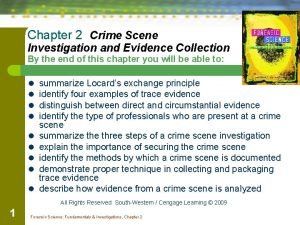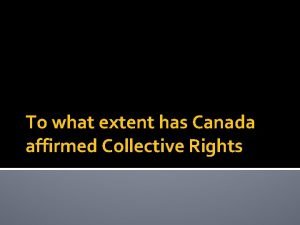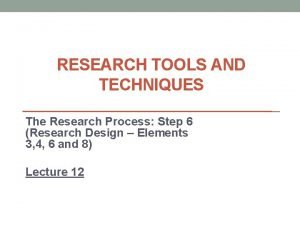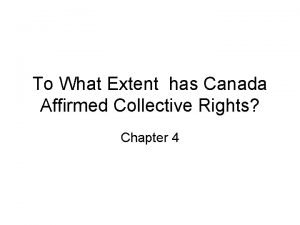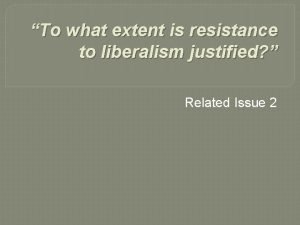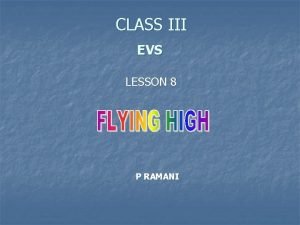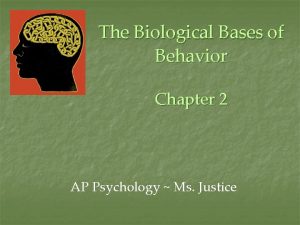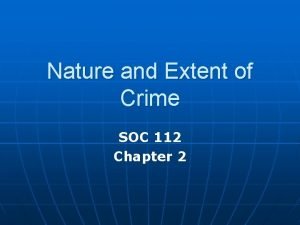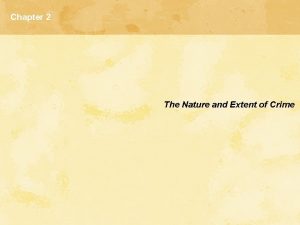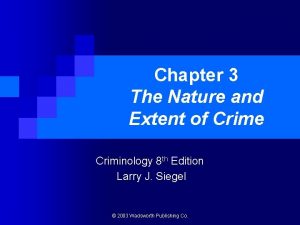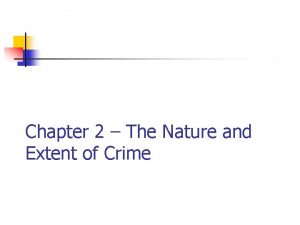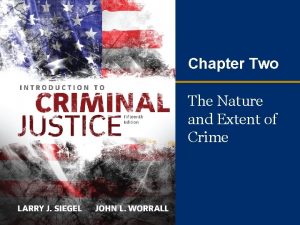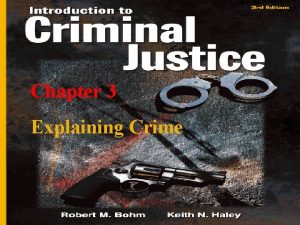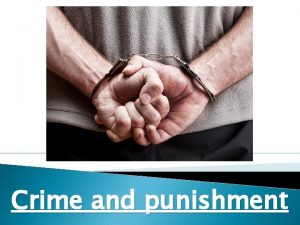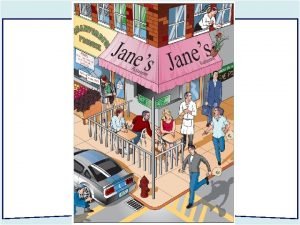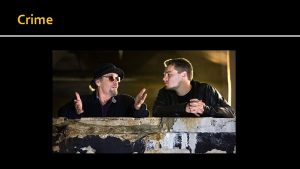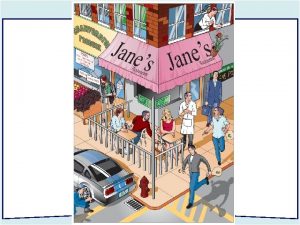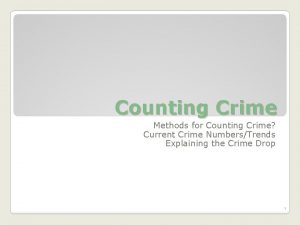Chapter 2 The Nature and Extent of Crime





















- Slides: 21

Chapter 2 The Nature and Extent of Crime

Thinking Point • In 2011 Casey Anthony was tried and found not guilty for the murder of her daughter Caylee. ü Find several newspaper articles that address this case. How was the crime covered by the media? ü How was the crime defined? AP Photo/Joe Burbank, Pool ü What was the general consensus by the public in terms of guilt or innocence?

How Crime is Defined Consensus View The criminal law is a set of rules, codified by state authorities, that expresses the norms, goals, and values of the vast majority of society Conflict The View law is the instrument that enables the wealthy to maintain their position of power and control the behavior of those who oppose their ideas and values or who might rebel against the unequal distribution of wealth

How Crime is Defined Interactionist Criminal View law is structured to reflect the preferences and opinions of people who hold social power in a particular legal jurisdiction

How Crime is Defined Though consensus, conflict, and interactionist views of crime differ, they generally agree that: Criminal law defines crime The definition of crime is constantly changing and evolving Social forces mold the definition of crimes Criminal law has a social control function

How Crime is Defined

What are the Different Categories of Crime? Violent Crime Gang violence Multiple murder Mass murders Spree killers Serial killers Intimate violence Hate crimes

Thinking Point • In December 2012, 26 people were killed at an elementary school in Newtown, CT, yet again shocking people of this quiet community. ü Read several newspaper articles about this incident. How does this incident compare with your understanding of other school shootings? How is it different? ü Who should be responsible for the safety of students and teachers at school?

What are the Different Categories of Crime? Public Order Crimes Prostitution Substance Economic Amateur abuse Crimes and professional thieves White collar crime Organized crime

Sources of Crime Data The Uniform Crime Report (UCR) Compiled by the FBI, this national survey compiles criminal acts reported to local police The acts are called Part I crimes: Murder Rape Burglary Robbery Assault Larceny-theft Motor vehicle theft

Percentage of Crimes Cleared by Arrest

Sources of Crime Data National Incident-Based Reporting System Program that collects data on each reported crime incident Requires local police agencies to provide at least a brief account of each incident and arrest, including the incident, victim, and offender information There are expanded crime categories, such as blackmail, embezzlement, drug offenses, and bribery

Sources of Crime Data National Asks Crime Victimization Survey people about their experiences with crime Self-Report Asks Surveys offenders themselves to report about their criminal behaviors

Victimization

Victimization

Monitoring the Future Survey of Criminal Activity of High School Seniors

Crime Trends in Violent Crime and Property Crime Trends in Victimization Trends in Self-Reporting

Crime Patterns The Ecology of Crime Day, season, and climate Regional differences Social Class, Socioeconomic Conditions, and Crime Explaining the class-crime relationship Instrumental crimes Inner city, high poverty areas

Crime Patterns Age and Crime Young people commit more crime Gender Men and Crime commit more crime Explaining Crime Rate Physical Gender Differences in the strength, hormonal influences Socialization and development Cognitive differences Feminist views

Crime Patterns Race and Crime Minority group members involved in a disproportionate share of crime ü True differences? Bias? System bias Cultural bias Structural bias ü Is convergence possible?

Crime Patterns Chronic Offending and Crime What causes chronicity? Policy implications Three-strikes Truth-in-sentencing
 Importance of nature of delinquency
Importance of nature of delinquency Nature and nature's law lay hid in night meaning
Nature and nature's law lay hid in night meaning Nature nature controversy
Nature nature controversy Chapter 7 deviance crime and social control
Chapter 7 deviance crime and social control Summarize locard's principle of exchange
Summarize locard's principle of exchange To what extent has canada affirmed collective rights?
To what extent has canada affirmed collective rights? Uk at its greatest extent
Uk at its greatest extent Difference between contrived and non contrived study
Difference between contrived and non contrived study Table of extent 0
Table of extent 0 Construct validity
Construct validity To what extent should we embrace globalization
To what extent should we embrace globalization To what extent should internationalism be pursued
To what extent should internationalism be pursued To what extent has canada affirmed collective rights
To what extent has canada affirmed collective rights To what extent should nation be the foundation of identity
To what extent should nation be the foundation of identity How to answer to what extent questions apush
How to answer to what extent questions apush To what extent should we embrace nationalism
To what extent should we embrace nationalism Is resistance to liberalism justified
Is resistance to liberalism justified Which bird can rotate its neck backwards to a large extent
Which bird can rotate its neck backwards to a large extent Beowulf reading guide
Beowulf reading guide Noncontrived
Noncontrived To what extent can a damaged brain reorganize itself
To what extent can a damaged brain reorganize itself To what extent adverbs
To what extent adverbs




